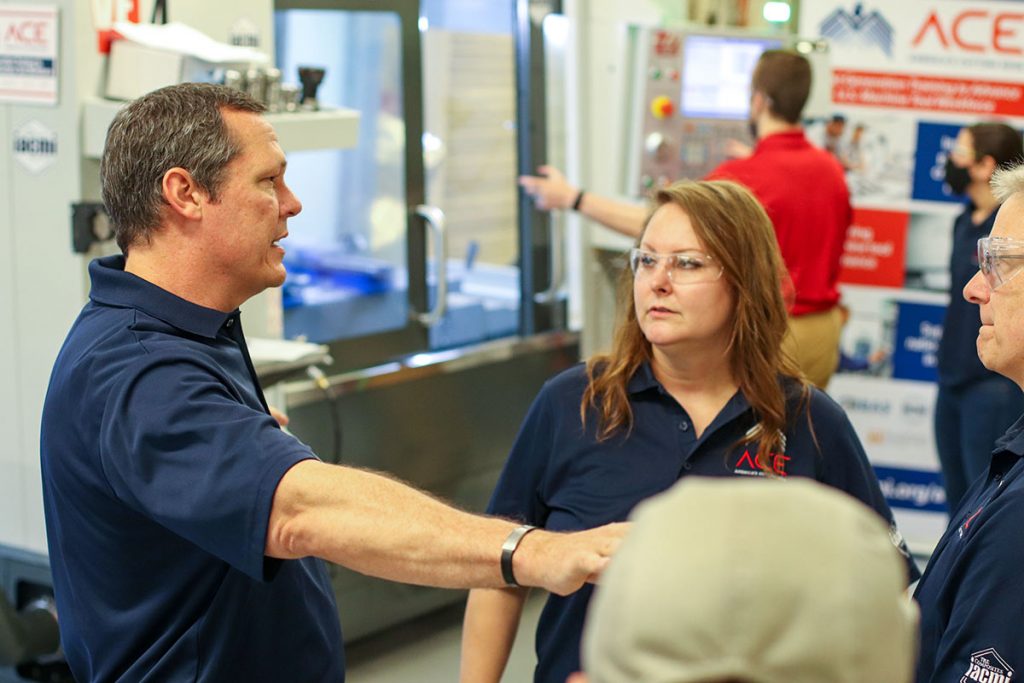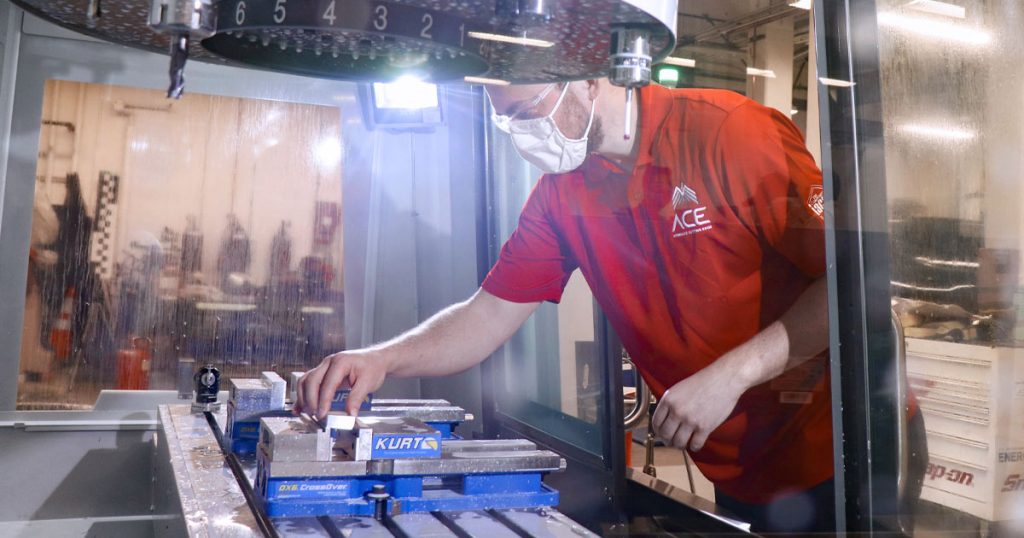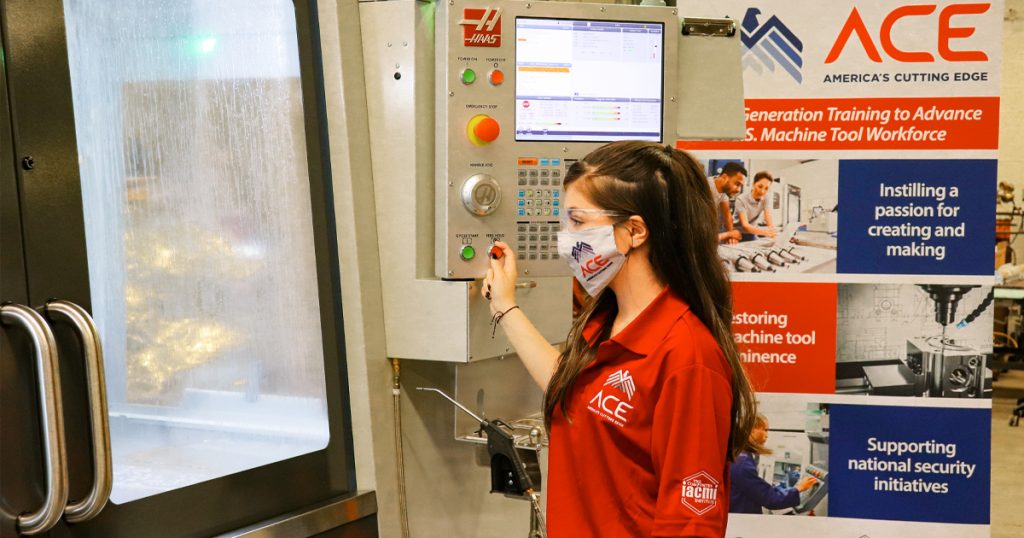ACE Readies for In-Person CNC Machining Training
Innovative IACMI, UT training teaches essential manufacturing skills to address US manufacturing workforce gap
Training the next-generation machine tool workforce is continuing this summer through six in-person boot camps to be hosted jointly by the University of Tennessee, Knoxville (UT), Oak Ridge National Laboratory (ORNL), and Pellissippi State Community College.
The boot camps, which started in late May and will run through the summer, are part of America’s Cutting Edge (ACE), a highly successful CNC machining training program developed by the Institute for Advanced Composites Manufacturing Innovation (IACMI) and UT Professor of Mechanical Engineering Tony Schmitz.
Designed to teach essential machining skills and address the nation’s growing manufacturing workforce gap, ACE kicked off in December 2020. The six-hour online curriculum walks users through the steps necessary to set up for machining a component, up to the point of engaging with the machine. So far, more than 1,400 students from across the nation—including future manufacturing engineers, machine tool designers, entrepreneurs, machinists, and more—have taken the course.
The in-person course this summer will pick up with the on-machine setup. The sixty total participants will learn one step at a time and build on each previous day, ultimately producing the components necessary to create an oscillating air engine by machining and assembling four parts: base (aluminum), piston block (aluminum), valve block (printed polymer), and wheel (steel).
To prepare, UT PhD students Emma Betters, Aaron Cornelius, and Jake Dvorak, along with Schmitz, who is also a joint faculty member at ORNL, hosted a week-long practice session May 10–14 for other UT students.

The biggest obstacle the group faced was developing an in-person curriculum suitable for the wide range of expected backgrounds of participants, from those who have never seen a machine in person to those who run machines daily.
“Trying to create something that works for everyone’s skill levels was a challenge, but we successfully incorporated a mix of instruction including demonstration, lecture, and hands-on tasks that will appeal to a range of learners,” said Betters. “I was happily surprised by how smoothly the training went.”
On-machine training is divided into computer-aided manufacturing (CAM) sessions and machining sessions, with only two participants on a machine at any time, to allow for optimal instructor-participant communication and provide a low-pressure environment for learning and questioning.

“A lot of educational material targeted at CNC beginners tends only to provide fixed recommendations on how fast to run tools, or directs users to follow the manufacturer’s recommendations,” said Cornelius. “In the ACE program, Emma and Dr. Schmitz help students understand what’s happening at the actual cutting edge of the tool and how different machining variables affect that. They talk about issues such as how temperature affects tool life and chatter. Then, Jake and I follow with the CAM and machining exercises to provide practical, hands-on application. Even on the first day, we show how changing feed rates and depth for a finish cut gives a better surface finish than a roughing pass.”
Reflecting on her own career path, Betters, who is also research and development associate staff at ORNL, explained that during her undergraduate education she took “Design of Manufacturing,” a required course using manual equipment to go from design to production.
“Design for manufacturability is an under-taught skill, but I found it incredibly gratifying to touch something I made, which is why I learned machining,” said Betters. “I never thought of manufacturing before that, but afterwards it morphed into more for me than I ever imagined.”
Betters says she believes the collaboration between ORNL, IACMI, and UT is responsible for the wide reach of the ACE program, and that this course, which provides both an overview of the science of manufacturing as well as insight into production, has the capacity to be instrumental in the career decisions of participants.
ACE combines the workforce development leadership of IACMI and the research and academic excellence of UT. The program is supported by the US Department of Defense Industrial Base Analysis and Sustainment program from the Office of Industrial Policy.
Contact
David Goddard, david.goddard@utk.edu, 865-974-0683
